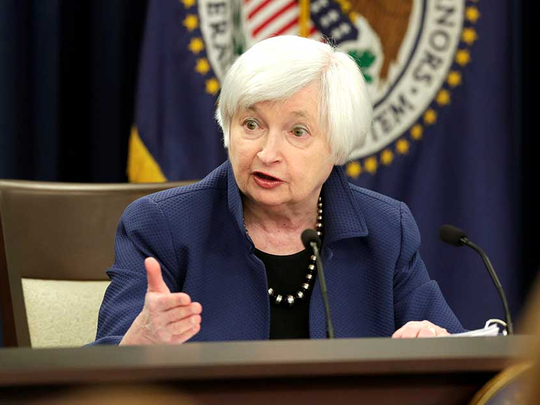
I know nothing of Federal Reserve Chairman Janet Yellen’s abilities as a singer, but I recommend she be given an honorary position in the fictional Barden Bellas, the a cappella group in the cult film classic Pitch Perfect.
Janet Yellen was pitch perfect at her press conference last week, as evidenced by the constructive reaction from both the bond and equity markets. Indeed, last Wednesday’s move in the US government bond market was the largest one-day price gain in nine months.
At first glance, this might seem strange given that the central bank policy move was to raise rates. But recognising why the market reacted as it did is fundamental to understanding the notion that the Fed is now on a policy path that’s more about normalisation than a simple policy response to improving cyclical data. Indeed, this is a key point.
At the end of February, I suggested in my CIO Weekly, Yellen Takes the Reins, that the Fed had the perfect set of circumstances over the next few quarters to move to a normalisation of policy: improving economic growth, rising equity markets, growing consumer confidence and moderate inflation. Yellen referred to this last week when she spoke about normalisation, beginning with bringing the real Fed Funds rate to zero and then gradually moving it from zero to closer to 1%. In fact, such a move would be well received by markets.
Why Now? Why Not?
Last week, my colleague Thanos Bardos, in his commentary on the aftermath of the policy action, En Marche, Fed!, addressed the “Why Now?” question. The answer is that it’s vital to get the normalisation process started now in order to avoid having to backload rate increases later in the cycle. Here’s why:
Over the last 70 years, the central bank has not had a great track record when it comes to forecasting recessions. At times, it almost seems as if they’ve been complicit in helping to foster them. This “complicity” came from a late policy response to curtail accelerating inflation when an earlier, more pre-emptive approach might have been more appropriate.
More recently, in each of the last three recessions going back to 1990, it could be argued that the central bank was chasing inflation, aggressively moving to higher rates, which ultimately produced an inverted yield curve. The majority of recessions going back to World War II have been preceded by an inverted yield curve. Traditionally, it’s been seen as a good indicator of a recession.
By focusing on normalisation, however, the Fed has an opportunity to be more pre-emptive and avoid chasing inflation later in the cycle. The key element evidenced in Yellen’s actions last week was the more aggressive path to higher rates, together with an assertion that her forecast had not really changed.
If you wind back a month or so, the market expectations were for a couple more rate hikes at best this year. But two weeks ago there were signs of an orchestrated effort on the part of the Federal Open Market Committee (FOMC) members to prepare the market for an earlier hike. This wasn’t based on a new forecast, it was about normalisation, and the bond and equity markets took great comfort from that. Indeed, from a fixed income perspective, it’s better to be early and more aggressive. The Fed is now acting confidently, clearly and decisively as it moves to more normal market conditions. This improves confidence in the end. Unconventional monetary policy is something most market participants have concluded is no longer necessary. In short, a return to normal is good for markets.
A confident and assertive Fed explains, in part, the bond market’s immediate reaction last week. Our view is ultimately that longer-term rates are headed higher in response to evidence of stronger growth. The final destination will be tempered by a central bank committed to satisfying all of its policy objectives.
I’ll close by observing that during Janet Yellen’s tenure at the Fed, her performance last week was the best combination of action, policy statement and press conference that I’ve seen her display. She really hit a high note.
-- Brad Tank, Chief Investment Officer, and Global Head of Fixed Income at Neuberger Berman.







